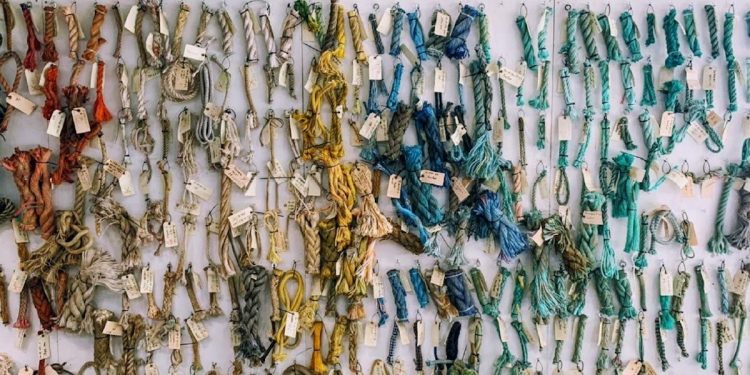Around 11,000 tonnes of end-of-life fishing gear is estimated to end up into European waters every year, a workshop held in Brussels and organised by MRAG in collaboration with CEFAS and OSPAR was told.
Among other requirements, the Single-use Plastics Directive, adopted in June 2019, requires the European Commission to request European Standardization Organization (ESO) to develop a standard for the circular design of the fishing gear. 80% of negative environmental impact of products at the end of life could be reduced at the product design stage.
To the date design and development of fishing gear has not incorporated environmental considerations (ecodesign), including circularity, and a European standard will provide guidelines on how to voluntarily improve this.
To better understand recyclability and reuse of fishing gear at the end-of-life, to identify existing challenges, solutions, best practices and technologies to design, reuse and/or recycle end-of-life fishing gear and to prepare the request to the ESO, the European Commission in co-operation with EASME launched a study led by MRAG.

Relevant stakeholder groups involved in the collaborative consultation process come from academia, plastic producers, the fishing industry, gear assemblers, NGO’s and both national and port authorities.
During the meeting, MRAG presented the circular design of fishing gear study, of which the workshop was an integral part, aiming to provide substantial recommendations on objectives, criteria, and fishing gear classifications considered for the development of a standard for circular design of the fishing gear.
Mareike Erfeling, co-convenor of the OSPAR working group on marine litter, presented monitoring results concerning fishing gear in the seas as well as the OSPAR Project on Design and Recycling of Fishing gear. Preliminary results of the project, presented by project lead Roos Bol, include modification of the fishing gear design is a potential solution to improve future fishing gear recycling. Fishing gear is particularly difficult to recycle because of the number of different materials that are used and mixed during the production, and because of the logistics involved in recycling such a relatively small waste stream.
Bernard Merckx from Plastix Global emphasised the challenge of recycling gear components that are manufactured from several polymers –with subsequent speakers returning to the same point –some 700 polymer mixtures have been identified so far. He pointed out the importance of gear design for subsequent disassembly, recyclability and capture at end of life. He also emphasised the advantage of having just one EPR scheme for fishing gears in Europe.
Martin Charter of the University for the Creative Arts highlighted that circular design should incorporate reuse, regeneration and recycling and shared many innovative examples of recycling.
Vikas Aggarwal from BASF made the distinction between different types of recycling that can be used in different situations: mechanical recycling from polymer to polymer, chemical recycling from polymers to monomers and thermochemical recycling from a polymer mix to a raw material. He also stated that the collection of recyclable materials is a challenge within the complicated value chain of fishing gear.
Gillian Herpers of the Dutch Standardisation Institute presented different types of standards that NEN supports developing. Standards are always voluntary, but as they are set up in co-operation with all stakeholders, they are a powerful instrument for self-regulation.
A set of recommendations voted on by participants placed a number of issues as priorities.
Concerning design for recyclability and reuse, the recommendation is for funding for R&D for dismantling, a joint EU call for material development considering new materials and coatings, testing for the implications of using high quality recyclates, and research and innovation for design for recyclability, which includes pilot with expert input/advice.
Taking into account design to reduce impact on the marine environment, the recommendation is to promote durability into design and development and material for longer performance and reuse/recycling.
On the subject of collection and logistics for recycling, the recommendation is for further research, for mapping exercises of fishing gear supply chain, for approaches at national level, and the potential for cross border issues at regional seas level. This should include links to money flow, different stakeholders, different levels (eg EU, national, port), with a need for analysis per port.
Concerning the practicalities of collection, delegates recommended a date and weight inventory for all member states with a standardised methodology.









